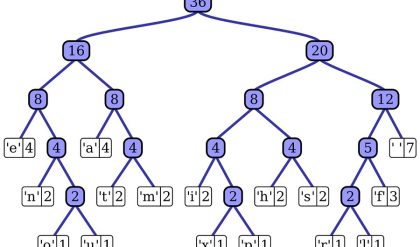Now, with all the components of the algorithmic problem solving in place, how do you design an algorithm to solve a given problem? This is the main question this book seeks to answer by teaching you several general design techniques.
What is an algorithm design technique?
An algorithm design technique (or “strategy” or “paradigm”) is a general approach to solving problems algorithmically that is applicable to a variety of problems from different areas of computing.
Check this book’s table of contents and you will see that a majority of its chapters are devoted to individual design techniques. They distill a few key ideas that have proven to be useful in designing algorithms. Learning these techniques is of utmost importance for the following reasons.
First, they provide guidance for designing algorithms for new problems, i.e., problems for which there is no known satisfactory algorithm. Therefore—to use the language of a famous proverb—learning such techniques is akin to learning to fish as opposed to being given a fish caught by somebody else. It is not true, of course, that each of these general techniques will be necessarily applicable to every problem you may encounter. But taken together, they do constitute a powerful collection of tools that you will find quite handy in your studies and work.
Second, algorithms are the cornerstone of computer science. Every science is interested in classifying its principal subject, and computer science is no exception. Algorithm design techniques make it possible to classify algorithms according to an underlying design idea; therefore, they can serve as a natural way to both categorize and study algorithms.
Designing an Algorithm and Data Structures
While the algorithm design techniques do provide a powerful set of general ap-proaches to algorithmic problem solving, designing an algorithm for a particular problem may still be a challenging task. Some design techniques can be simply inapplicable to the problem in question. Sometimes, several techniques need to be combined, and there are algorithms that are hard to pinpoint as applications of the known design techniques. Even when a particular design technique is ap-plicable, getting an algorithm often requires a nontrivial ingenuity on the part of the algorithm designer. With practice, both tasks—choosing among the general techniques and applying them—get easier, but they are rarely easy.
Of course, one should pay close attention to choosing data structures appro-priate for the operations performed by the algorithm. For example, the sieve of Eratosthenes introduced in Section 1.1 would run longer if we used a linked list instead of an array in its implementation (why?). Also note that some of the al-gorithm design techniques discussed in Chapters 6 and 7 depend intimately on structuring or restructuring data specifying a problem’s instance. Many years ago, an influential textbook proclaimed the fundamental importance of both algo-rithms and data structures for computer programming by its very title: Algorithms + Data Structures = Programs [Wir76]. In the new world of object-oriented programming, data structures remain crucially important for both design and analysis of algorithms.


Comments are closed.